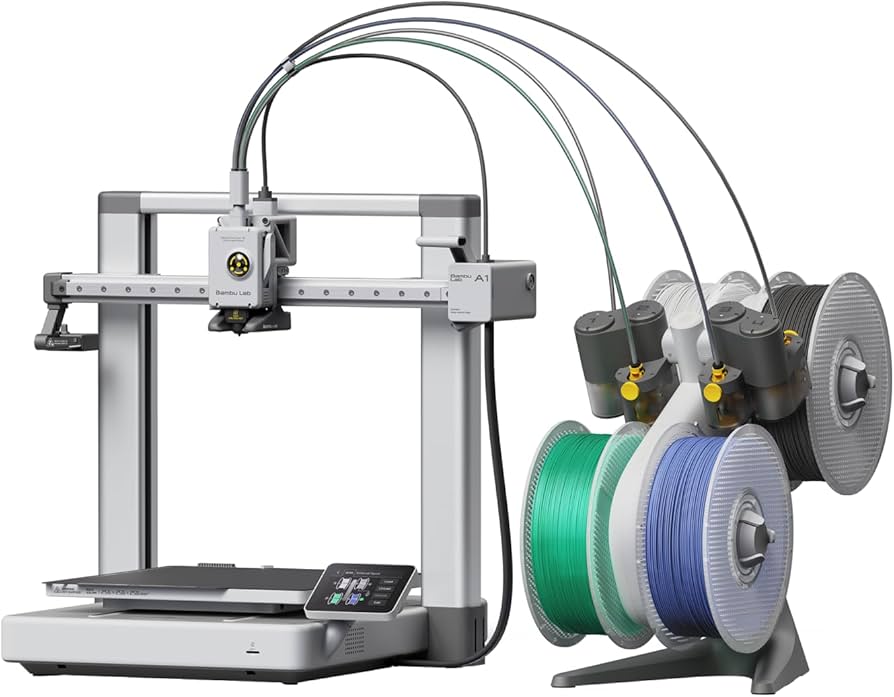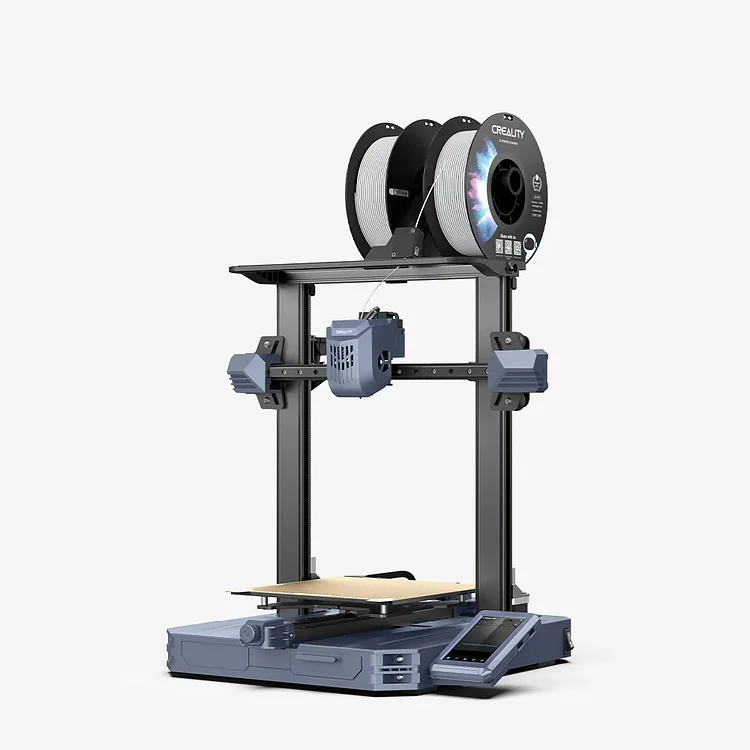Compare A1 vs CR10 SE
Comparison between the best 3D printers
Choose the best 3D printer at the best price. The cheapest 3D printers are here.
Buy a 3D printer here with 3D Fila.
 |
 |
|
| Model | A1[BUY A1] |
CR10 SE |
| Printing Material | Filament | Filament |
| Buy Filament for Bambu Lab A1 | Buy Filament forCreality CR10 SE | |
| Estimated price | $700,00 | $386,00 |
| Manufacturer | Bambu Lab | Creality |
| Release Year | 2023 | 2023 |
| Print Volume [mm] | 256x256x256 | 220x220x265 |
| Printer Size [mm] | 385x410x430 | 490x470x625 |
| Weight [kg] | 8,3 | 6,9 |
| Power Loss Recovery | YES | NO |
| Enclosed printer | NO | NO |
| Bed Leveling | Automatic | |
| Filament End Sensor | YES | NO |
| Bed type | Heated | |
| Power supply system | Direct Drive | Direct Drive |
| Standard nozzle | 0,4 | 0,4 |
| Maximum Nozzle Temperature [°C] | 300 | 300 |
| Maximum Bed Temperature [°C] | 100 | 110 |
| Maximum printing speed [mm/s] | 500 | 600 |
| Filament holder | YES | YES |
| Camera for supervision | YES | YES |
| Recommended filaments | PLA, PETG, TPU, PVA | PLA, PETG, PET, TPU, PA Wood, ABS, ASA, PA, PLA-CF |
| Recommended slicers | SuperSlicer, PrusaSlicer, Cura, OrcaSlicer | Creality Print, Cura, Simplify3D, PrusaSlicer, Orca Slice |
| Maximum Resolution [mm] | 0,1 | 0,1 |
| Processor | ||
| Display | Touchscreen 3,5 | |
| Power Supply | 350 W | |
| Connectivity | Wi-Fi, Bambu-Bus, Cartão Micro SD | USB, Wifi |
| Operating systems | Windows, Linux, Macbook | Windows, Linux, Macbook |
| Date of registration in the system | 2024-07-17 | 2024-07-02 |
| Release date | 2023 | 2023 |
| Extra features | The BambuLab A1 printer features fully automatic calibration, multi-color printing with the AMS system, active flow rate compensation, quick nozzle change with a clip, active motor noise cancellation, a build volume of 256x256x256 mm³, a maximum extruder temperature of 300°C, and a heated bed of up to 100°C. In addition, it has high precision, a machine health management system and an intuitive 3.5-inch touchscreen interface. | The Creality CR10 SE stands out for its printing speed of up to 600 mm/s, easy and intuitive assembly, direct extruder with double gears, hotend with hardened steel nozzle and ceramic heater, automatic leveling with CR-Touch and pressure sensor, and use of Creality OS firmware based on Klipper, with automatic input shaping calibration. It also includes Wi-Fi connectivity, a filament out-of-stock sensor and a robust structure with linear rails on the X and Y axes. |
| Support for multiple colors and materials (AMS and CFS) | YES | NO |
Notes * |
||
| Cost-benefit | 7 / 10 | 7 / 10 |
| Hardware | 4.2 / 10 | 2.1 / 10 |
| Tela | . | . |
| Print volume | 4 / 10 | 3 / 10 |
| Performance | 4 / 10 | 5 / 10 |
| [BUY A1] |
Conclusion |
| In comparing the Bambu Lab A1 and the Creality CR10 SE, both 3D printers present compelling features tailored to different user needs. The Bambu Lab A1, with its automated calibration, advanced multi-color printing capabilities, and an intuitive touchscreen interface, positions itself as a modern solution for those seeking ease of use and high-tech functionalities. Its print volume is slightly larger, and the inclusion of a filament end sensor enhances its reliability, making it suitable for users who prioritize convenience and precision. On the other hand, the Creality CR10 SE shines in speed and assembly ease. With a maximum printing speed of 600 mm/s and a robust structure designed for stability, it caters well to users focused on performance and efficiency. It supports a wider variety of filaments, allowing for greater versatility in projects, especially in professional settings. When considering cost, the Creality CR10 SE offers a more budget-friendly option without sacrificing significant functionality, making it an attractive choice for hobbyists and budget-conscious consumers. Conversely, the Bambu Lab A1 introduces advanced features that may justify its higher price point for users who can capitalize on them. Ultimately, the choice between the Bambu Lab A1 and Creality CR10 SE depends on individual preferences: those valuing cutting-edge technology and user-friendly features may lean towards the A1, while users seeking speed and versatility may find the CR10 SE the better fit. Both models demonstrate solid performance and build quality, with strengths that appeal to different segments of the 3D printing market. |

